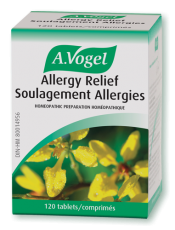Hayfever and allergic rhinitis can wreak havoc on a workout schedule and discourage the most dedicated enthusiasts from enjoying outdoor sports or activities. From disrupted breathing and disappointing cardiovascular performance due to nasal congestion, to hindered concentration and sapped energy, hayfever symptoms can be devastating for a workout!
But that’s no reason to give up: there is hope!
According to a study conducted by Professor Jean Emberlin, director of Pollen UK, regular exercise can actually help improve your hayfever symptoms.
The study found that those who are most physically active tend to have milder symptoms than those who do little or no exercise, and recommended that hayfever sufferers should try to incorporate five 30-minute sessions of exercise per week.
You may wonder: how can I possibly exercise and blow my nose, sneeze and be blinded by streaming eyes all at once? Allow me to present 10 ways to help, whether you’re hitting the gym or braving the outdoors.
10 ways to exercise better with hayfever
1. Avoid exercising when pollen is high
During the hayfever season, even though the weather warm and sunny and you’re more inspired to get out more and enjoy activities in the sun, it’s best to avoid exercising outdoors when pollen is high.
Unfortunately the most common and convenient times to workout for most of us (first thing in the morning and early evening) are also the same times when pollen is usually at its highest.
A better time for your workout is during lunch break, in late morning or afternoon when pollen levels tend to be lowest. I know changing your workout schedule to suit pollen sounds both annoying and inconvenient, but it can make all the difference.
You can also plan according to the weather forecast. When the weather is dry, sunny and windy, pollens are all over the place. Choose a day that is not so windy or go right after a rainfall.
2. Plan your exercise route
If you can’t reschedule your workout times then try to avoid areas where pollen count is highest. If out running or walking, avoid wooded areas such as parks, gardens and fields. Staying near the ocean is best but we can’t all travel to the coast for a jog. I guess a river or lake can do too (if there is no fields or forests nearby).
Knowing where and when pollen is likely to be high is vital. Check you local weather network pollen report to avoid hotspots and help you plan your workouts better, especially if they are outdoors.
3. Exercise indoors
Some days, pollen levels are really high and conditions are just not in your favour. It’s a good idea to stick to indoor exercise, for example at your local gym, swimming pool or indoor tennis courts.
However, believe it or not, the gym could make you sick. If you’ve just signed up for a gym membership and seem to be suffering from one infection after another, then this could be due to the damp atmosphere making it easy for humidity-loving viruses to infect your respiratory system.
Harsh cleaning chemicals used in changing rooms and swimming pools can also trigger sensitive respiratory systems and cause nasal reactions. Try to limit your time in these areas if this is the case.
4. Exercise-induced asthma
If you’re prone to exercise-induced asthma (wheezing or coughing during exercise, or difficulty breathing when physically active) then you’re more likely to react to allergens in the air. Try holding a small amount of water in your mouth when you start exercising – this sometimes helps. You may find that avoiding dairy keeps your lungs clearer.
In case of asthma, you may also want to start taking Stinging Nettle, a plant rich in alkaline minerals and silica, a mineral that promotes healing of the respiratory membranes. Furthermore, it is thought to have a stabilizing effect on the histamine release during allergic reactions.
5. Remember pollen sticks!
Once your work out is done, your damp clothes will be covered in pollen. Get undressed in the bathroom because you do not want that pollen to be floating around your bedroom, triggering a bedtime sneezing fit. Wash your sports gear immediately and dry them indoors rather than on the clothesline.
Take a shower before and after workout. Yes, it might sound a bit strange but having a shower before a workout can wash away any pollen that has collected on your body and hair, which can help you workout better as it stops pollen irritating you as you exercise.
Use a nose rinse daily. Think of it as an inner-nose shower to get rid of pollen that gets stuck to your nasal mucosa.
6. Avoid alcohol the evening before a workout
This might sound even stranger but if you drink the night before, your body will be busy eliminating that from your system. If you do not drink alcohol the night before, your body will have more energy to keep your nervous system stable and counter histamine production.
7. Eat to beat hayfever
Arm yourself for the hayfever season by eating the right foods. Opt for lots of fruit and veggies, which are high in immune-boosting vitamin C and act as natural antihistamines, such as citrus fruits, strawberries, tomatoes, kiwi, bell peppers and dark leafy greens.
A good idea is to include these in your pre-workout snack such as in a refreshing smoothie.
Reducing the amount of dairy products in your diet is also a good idea during the hayfever season, as they can contribute to congestion of the mucous membranes in the respiratory tract.
8. Put up pollen traps
Before your workout, especially if it’s outdoors, spread a little bit of barrier balm (such as coconut oil) around the edge of each nostril to trap or block pollen. Reapply each time you blow your nose.
9. Wear sunglasses
Wearing sunglasses, especially wraparounds, while you are exercising outdoor, including running or walking, stops pollen from getting into your eyes.
10. Some plants can help
They’re not all about pollen and sneezes. Some plants actually help get rid of allergy symptoms. Other than Stinging Nettle, the combination of herbs in A.Vogel Allergy Relief is effective in combating the symptoms of hayfever including sneezing, itchy eyes and blocked nose, without drowsy side effects – so it won’t negatively impact your workout.
Remember, if sneezing is affecting your game, don’t let it stop you from exercising. The more you move, the lesser your symptoms and the better you’ll feel.





